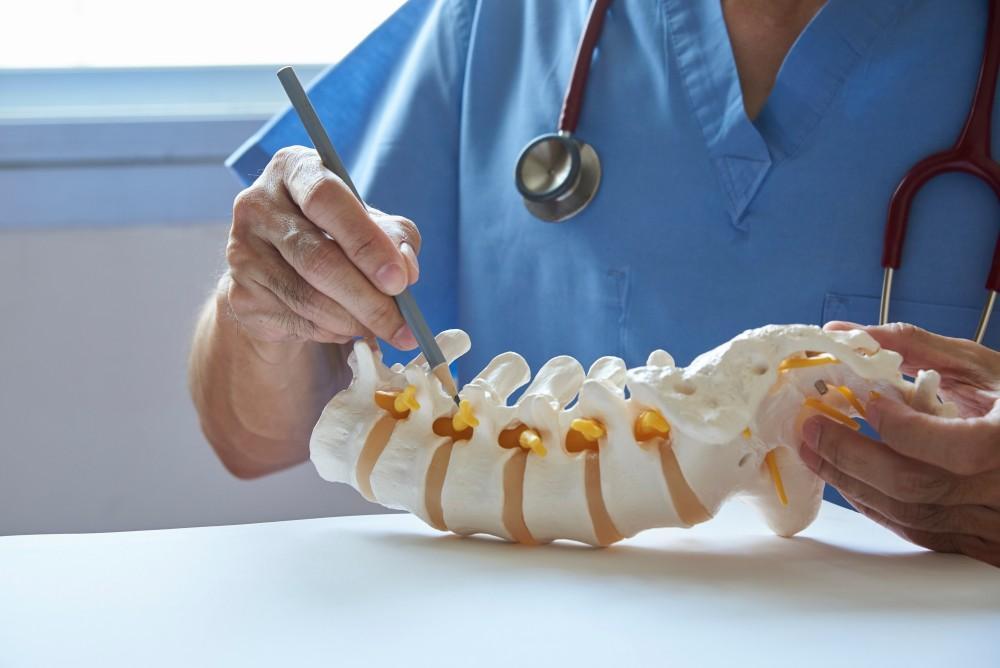
5 Common Causes of Neck and Back Pain

Neck and back pain are common complaints, with 60-80% of adults experiencing back pain at some point in their lives, and 20-70% experiencing neck pain. Both can interfere with your daily activities and become disabling if not treated.
According to board-certified neurosurgeon Dr. Kamal R. Woods at Vertrae®, which has offices in Dayton and Springfield, Ohio, up to 95% of both men and women sustain some degree of degenerative changes in their back by the time they reach 50. Those changes can lead to pinched nerves, damaged intervertebral discs, and a host of other complaints. That's why Dr. Kamal offers a number of different treatment options to get rid of your neck and back pain and let you move forward with your life.
5 common causes of neck and back pain
Here are some of the most common causes of neck and back pain:
1. Spinal osteoarthritis (OA)
Spinal osteoarthritis (OA) is due to wear-and-tear in the joints. As you age, the cartilage covering the facet joints (which connect the spinal vertebrae) starts to break down from a lifetime of bending, twisting, and flexing. Bones start rubbing against each other, causing pain and inflammation along the spine. You can also develop bone spurs (osteophytes), which narrow the spinal canal and the openings in the spinal column (foramina) where the spinal nerves exit, impinging on the nerves and causing further pain.
2. Degenerative disc disease (DDD)
Degenerative disc disease (DDD) is also a wear-and-tear condition. Over time, the intervertebral discs become dehydrated and start to flatten out, narrowing the space inside the spinal column as well as the size of the foramina. The flattened discs may push out into the spinal canal, impinging on nerves, while the disc degeneration puts additional pressure on the facet joints, accelerating their deterioration. As a result, you may experience neck pain and/or back pain.
3. Bulging and herniated discs
When the intervertebral discs become compressed, say from OA or DDD, they protrude from their normal position — they bulge. The most common cause of bulging discs is the wear-and-tear and dehydration caused by aging. If the protrusion continues, the hard outer shell (annulus) can rupture and spill out the soft inner contents (nucleus) — they herniate. Because herniated disks press on nerve roots in the spinal canal, they can lead to neck pain and/or back pain, numbness, and mobility issues.
4. Cervical and lumbar radiculopathy
Cervical radiculopathy results from compression of or damage to a spinal nerve in the neck. You experience neck pain, tingling, and numbness, which radiate from the nerve root down the length of the nerve, often into the hand. The damage can come from DDD, a ruptured disc, OA, or injuries to the area.
The most common form of lumbar radiculopathy is sciatica, which most commonly occurs when a herniated disc, bone spur, or narrowing of the spine between the L4-L5 and L5-S1 vertebrae impinges on the sciatic nerve. You experience back pain that radiates into the hips and buttocks and down the outside of each leg.
5. Spinal stenosis
Spinal stenosis is a narrowing of the spinal column, which can cause impingement of the nerves in the narrowed area. Its primary symptoms are inflammation, irritation, and neck pain and/or back pain. It’s most often seen in patients over 50 and due to OA or DDD, but it can also be caused by calcification (thickening) of the ligaments supporting the spine, enlarged bones and joints, and bone spurs on the vertebrae that compress the nerve roots.
Treating neck and back pain
Before Dr. Woods can treat you, he has to diagnose the underlying cause of your neck pain and/or back pain. Once he’s done that, he starts with conservative treatments, such as pain medications, injections, physical therapy, and even ultrasound.
If these don’t adequately relieve your symptoms, he may opt for minimally invasive surgery, which uses very small incisions to repair the damage to the spine. Two common procedures are:
- Laminectomy: removes bone spurs and other parts of the vertebrae through a small incision to create enough space for the nerves
- Foraminotomy: expands the foramen in your vertebrae, where the nerve roots exit
If you’re experiencing back pain, especially if you’re reaching middle age, it’s important to determine if spinal stenosis is the cause so you can receive appropriate treatment. Give Vertrae® a call at either location to schedule a consultation with Dr. Woods, or book online with us today. You’ve got pain, we’ve got solutions.
You Might Also Enjoy...


4 Benefits of Outpatient Spine Surgery

Am I a Candidate for Kyphoplasty?

Pulled Muscle vs. Pinched Nerve: What's the Difference?

4 Subtle Signs of Sciatica

